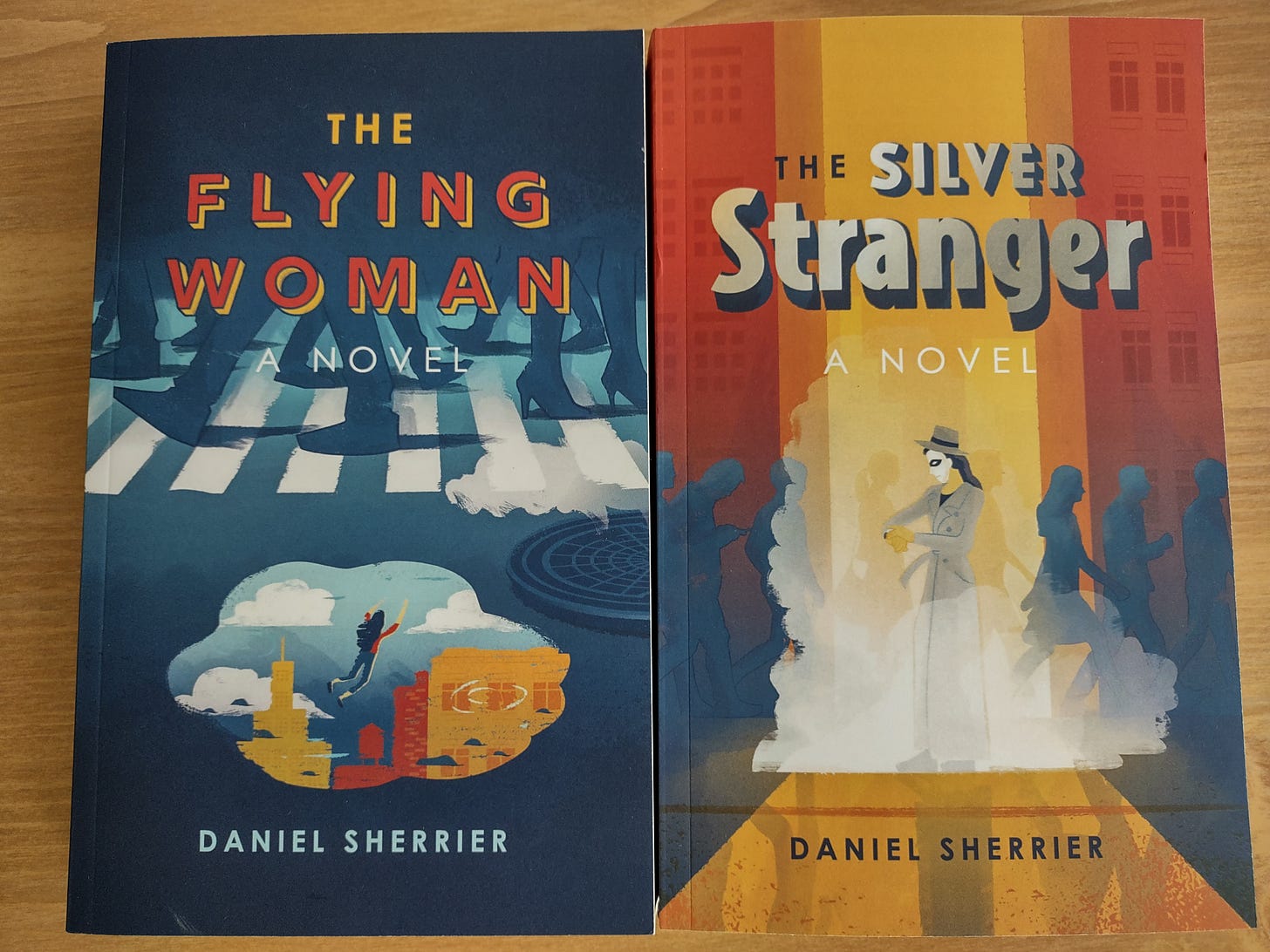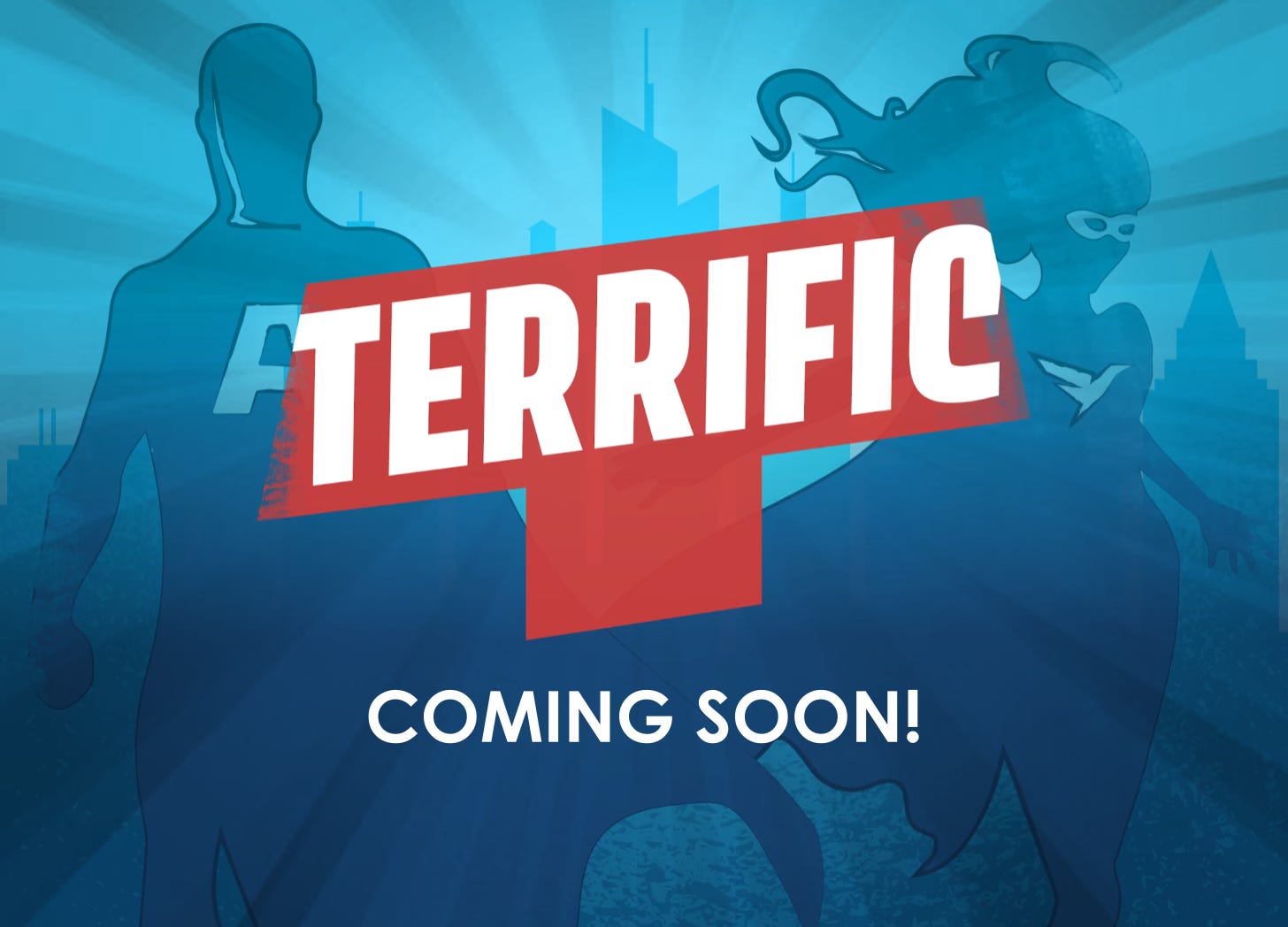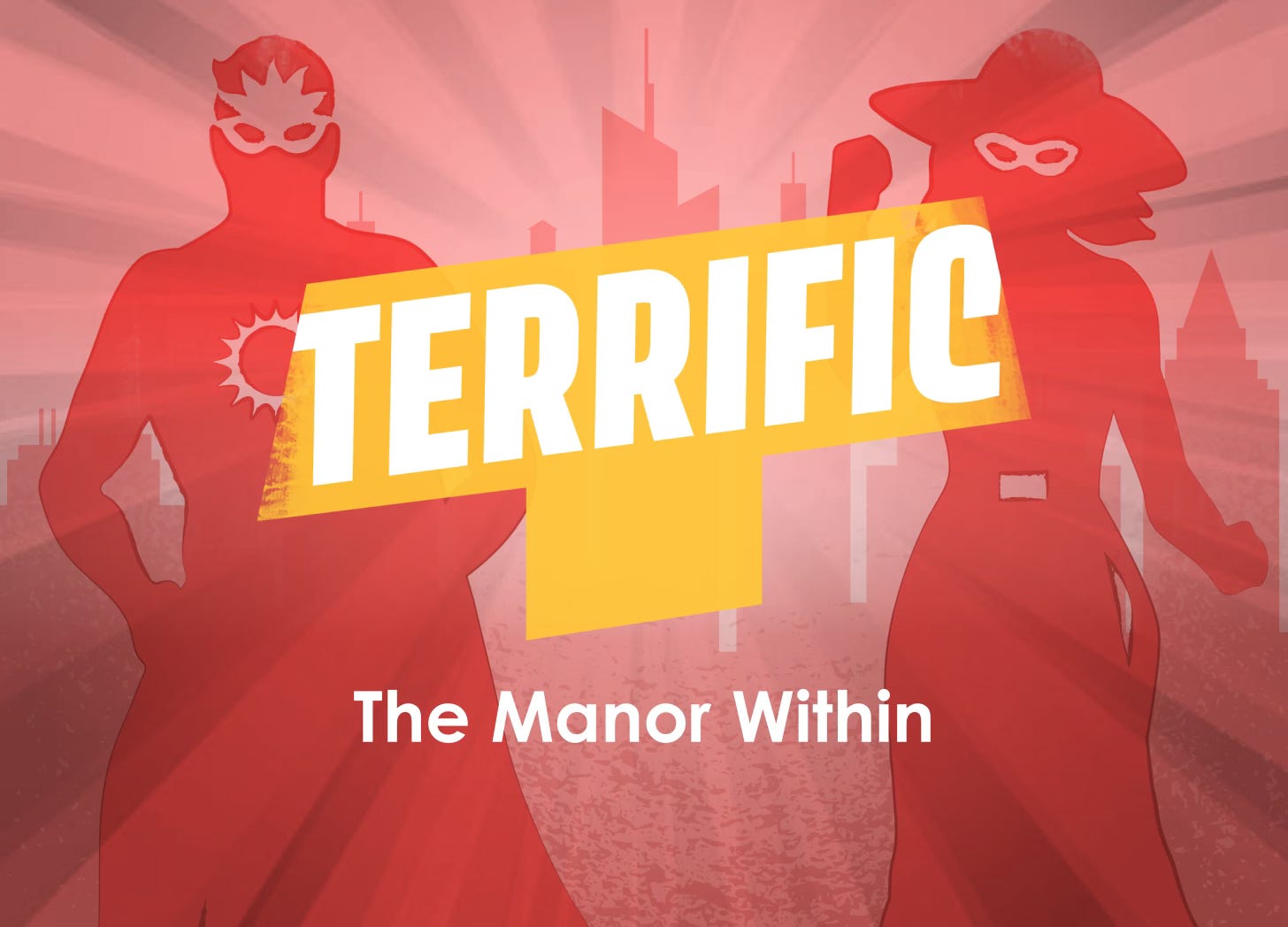Superheroes work best in a combination of short and long stories—episodic adventures as well as ongoing sagas. The smaller stories humanize the characters so that we care about them when they’re trying to save the world.
That’s been among my takeaways as I’ve critiqued movies, shows, and books in this space. Long-running movie series tend to minimize the quiet moments and skip some parts, and TV shows become so committed to season-long arcs that the pacing suffers. But many excellent comic book runs, such as the classic Uncanny X-Men and New Teen Titans, achieved the right balance.
And therein lies the solution to my own conundrum.
I’ve written and published two superhero novels so far—The Flying Woman and The Silver Stranger. It’s no secret that my love of superhero comics stretches back a few decades. As I said in one of my earliest posts here, superheroes must aspire to be the best of us, or at least better than they previously were. No one is born purely virtuous, so how does someone act like a perfect superhero when they’re only human?
I wanted to create my own flawed but aspirational superheroes while combining the strengths of novels with the strengths of classic comics. In both books, adapting the superhero genre into prose was a fun challenge, but it was a challenge.
An origin story translates nicely to the structure of a novel (or a movie). It’s the classic hero’s journey. It pulls the protagonist out of her normal routine and thrusts her into new adventures, forcing her to grow along the way. An origin story is full of change; this is often when superhero characters are at their most dynamic. The status quo hasn’t yet solidified. (I’ve previously written about why Spider-Man’s origin story is so excellent and timeless here.)
Origin stories work so well that I cheated and did another one in The Silver Stranger. A different character took the lead and entered this city of super-people for the first time. And while her origin story unfolded, the previous protagonist’s story continued.
But the third novel wasn’t working. I initially considered promoting a different supporting character to the lead. Then I went back to the protagonist of The Flying Woman. I even toyed with alternating viewpoint characters.
Any which way, a single novel wasn’t feeling right. Individual scenes were working, but between those scenes was a strange mix of too much and not enough.
Books like The Martian Chronicles and I, Robot pointed me in the right direction. Neither book is a conventional novel, nor are they conventional short story collections. They’re sequences of smaller stories that build on and enrich each other. You can read the first story of I, Robot and feel perfectly satisfied that you’ve read a complete and interesting story. Or you can keep reading and dive deeper into this world of robots, and you’ll recognize some of the same characters appearing in multiple stories. Comic book structures feel like cousins to these sorts of books.
So, I’m going to lean into that. Instead of one final superhero novel, I’ll take a more serialized approach, presenting a series of shorter stories that build on each other. And I’ll do it right here.
Some stories may wrap up in a single part (or post/email). Most will span a few parts, each part ranging from 1,000 to 4,000 words but usually falling on the lower end. Different characters will take the lead in different stories, like in an ensemble TV show or comic book series. Standalone adventures and ongoing subplots will mix as we work toward an eventual grand finale.
You do not need to have read the first two novels to follow these stories. I certainly wouldn’t stop you from reading those books, but the aim is for these stories to work for new and existing readers alike, with various jumping-on points along the way.
My novel series is already called Terrific, so I’ll stick with that here.
Justin Burks, who illustrated and designed the covers for the novels, has created a set of wonderful header images for the series, mixing and matching a few different characters. You can check out some of his other work here.
For editing support, I turned to
, who also writes serialized fiction and short stories. If you’re looking for an editor, consider working with her—she’s efficient, insightful, and tactful. More than once, her notes have led me to think, Oh, yeah, why didn’t I notice that myself? (Of course, any remaining errors and oddities are entirely my own.)These stories will not go behind a paywall for the time being. I’ll eventually set up a paid subscription option, but that will initially be more in the patronage model for any kind souls who want to help me cover production costs or just signal their encouragement. There won’t be any hard sell. (Another way to signal encouragement is by reading the existing novels. Thank you to all who already have!)
But when I’ve published enough stories to fill a book, I’ll then republish them as a book and put most of those stories behind a paywall here.
[UPDATE 4/5/25: I have published enough stories to fill a book. It’s called The Faceless Man, and you can purchase it here. Most of these stories are now behind a paywall, but a few remain free to read. You can find those in the series index.]
The pop culture posts will continue on Fridays, and those will remain free. I may reduce the frequency to every other week to ensure I maintain quality; I’ll have to see how it goes. The Terrific stories will generally be weekly, with perhaps the occasional short hiatus between stories if I need to catch up on writing.
If you want to subscribe only to And the Quest for Pop Culture or only to Terrific, I’m happy to have you in either space, and thank you for reading. You can adjust your account settings here to receive just the commentary or just the fiction. If you want both, wonderful! No need to take any action.
Terrific will launch Sunday with the first installment of a three-part story.
This one is the most self-contained and is barely a superhero story. Then I’ll have a teaser chapter to bridge The Silver Stranger and the new series, and we’ll continue from there.
For now, I’ll leave you with this super-short blurb:
Welcome to Olympus City, where super-powers, physics-defying tech, and unearthly creatures are all possible now. Human nature, however, remains unchanged.
No one is born a perfect superhero, but a few strive to live up to the ideal anyway.
UPDATE: Read the first installment here.






